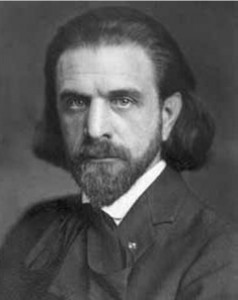by Wayne Still

B.J. Palmer – the first to develop a therapy based on the upper cervical vertebrae
C-1 is the first cervical vertebra making it the first vertebra in the spinal column. It is also known as the atlas, named after Atlas, the mythical figure who carries the world on his shoulders. Like Atlas, the atlas vertebra supports the human skull. It is also the point of entry for the spinal cord into the spinal column as it leaves the medulla oblongata at the base of the brain. In addition, important nerves, arteries and veins pass through C-1 and its partner on which it turns, C-2. This is a very important piece of human anatomy, its maintenance is crucial to the optimal functioning of the spine and hence the whole body.
The chiropractor B.J. Palmer was the first therapist to develop a therapy focused on the upper cervical vertebrae. The spine is a complex system of bones held together by ligaments and moved by muscles both small and large. As much as it supports the skull, it also hangs from the skull. So a misalignment at the top will create unnatural tensions resulting in more misalignments all the way down the column. These tensions manifest as unbalanced muscle groups working against each other resulting in the back pain which often brings clients to a practitioners work table. Palmer determined that if C-1 could be put in place there would be a ripple effect all the way down the spinal column. Balance would be restored, muscle groups would work in the harmonious manner they are meant to and the client would leave the office with a spring in their step.
My own first contact with the idea that manipulation of C-1 could bring about profound change was through Atlas Pro Filax (
www.atlasprofilax.com) which uses cranial-sacral therapy in combination with a vibrating tool to “install” C-1. The method was touted as all that was needed to bring about a profound change in ones structure and hence physical and mental health. I am always skeptical about such claims but did experience a deep shift in the structure of my upper back after the treatment. The theory made sense so I paid close attention to what was going on during the treatment and believed that I could manipulate C-1 using my Structural Integration skills to the benefit of my clients. Putting C-1 in place has been an integral part of my practice since that time.
What is interesting is that almost every one I work on has their C-1 out of alignment! Usually to the right. Why this should be I don’t know but I am not the first person to notice this. There is even a conspiracy theory that the aliens who brought our species into being manipulated our DNA so that C-1 would pinch our spinal cords. The nervous system would not be able to function at full capacity and we would not be able to achieve our full potential as humans. Don’t know about that but what I have experienced working with C-1 is that once it is in place there is a fluidity in the neck that was not there before. Other cervical vertebrae come into alignment when they would not before and indeed it is much easier to manipulate the thoracic and lumbar vertebrae. Imbalances in the connective tissue in the back are much easier to correct.
More recently I have learned that it is possible to manipulate the plates of the skull using gentle pressure along the sutures between the plates that make up the skull to subtly change its shape. Creating balance in the TMJs enhances the cranial work; the combination of all this creates a balanced, fluid environment where C-1 and its buddy C-2 are free to float making their job that much easier. And indeed, clients do leave my office with a spring in their step!
You might be interested in seeing this video which includes visual information on this topic.

